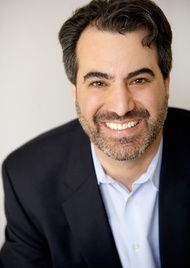By: Ron Pernick

A lot happened while I was unplugged and on vacation during late June. The Muslim Brotherhood offices in Cairo were stormed and then-Egyptian-president Mohammed Morsi’s tenure teetered on dissolution, record heat waves gripped the entire U.S. West resulting in devastating fires and deaths, and the Supreme Court overturned the federal Defense of Marriage Act and California’s Proposition 8, setting the stage for a new era in U.S. gay and lesbian rights. On top of that, President Obama unveiled a dramatic, wide-ranging new climate plan, getting the summer off to a heated start.
While Obama’s climate plan is primarily an assortment of existing programs and initiatives rolled into a new comprehensive package, it is notable on a number of fronts:
- First, with hopes for substantive, bipartisan Congressional action on climate all but off the table, the president has created a plan that can be instituted by executive action. Most notably, the enforcement of new EPA regulations will all but end new coal-fired power plants in the U.S., significantly impacting the future of the nation’s energy generation.
- Second, the president went right to the heart of the climate issue, focusing on adaptation and resiliency. As anyone who talks with city planners and leaders of low-lying metro regions (e.g. New York) or with key executives at insurance and reinsurance firms knows, resiliency is not just a topic du jour, but is now central to any future civic and business planning.
- Third, the initiative establishes the U.S. as a climate leader by firmly putting stakes in the ground. It calls on the U.S. is to double its share of solar and wind by 2020, cut carbon-dioxide emissions 17 percent below 2005 levels by 2020, dramatically increase building and vehicle efficiency, and more. These types of targets and mandates are exactly what drive innovation and deployment.
So, what’s missing?
First, the president needs to loudly and clearly end his support for an “all of the above” energy approach. For example, we should not be supporting or enabling extreme energy extraction in the form of Arctic drilling or Canadian tar sands. The country simply doesn’t need these sources or the environmental and climate impacts associated with them, and the president should make his intentions absolutely clear by not approving the proposed Keystone XL pipeline. We need to know which side of the equation the president stands on.
Second, the president’s plan is weak on details around financing mechanisms. While the MLP Parity Act opening master limited partnerships to clean-energy projects will require an act of Congress (one that we actually wouldn’t rule out happening), there are things the president can do in the meantime to support innovative financing of renewables and clean-tech development. Namely, he could instruct the embattled Internal Revenue Service to open up more real estate investment trusts (REITs) for renewables. The IRS has done that for Hannon Armstrong, which manages a sustainable infrastructure REIT, and could rule similarly for other funds.
Third, the president should establish the groundwork for putting a price on carbon. That could happen, in a somewhat circuitous way, via EPA regulations. But the president should also look at what China is doing as it tests its own cap and trade and carbon tax regimes. We don’t expect a federal carbon tax anytime soon in the U.S., but setting the stage for the eventual introduction of a well-thought-out and effectively planned price on carbon would serve future administrations well.
The fight for energy independence, climate adaptation and resiliency, and the jobs of the future should not be a left or right issue. “I know some Republicans in Washington dismiss these jobs, but those who do, need to call home—because 75 percent of all wind energy in this country is generated in Republican districts,” President Obama pointed out in his climate address at Georgetown University. “And that may explain why last year, Republican governors in Kansas and Oklahoma and Iowa—Iowa, by the way, a state that harnesses almost 25 percent of its electricity from the wind—helped us in the fight to extend tax credits for wind energy manufacturers and producers. Tens of thousands good jobs were on the line, and those jobs were worth the fight.” So, we’re off to an incendiary summer in more ways than one, from the Middle East to U.S. forest fires to massive, sometimes uncomfortable shifts (namely for opponents) around climate policy and gay and lesbian rights. And while it’s too soon to know if we are experiencing a climate revolution, in the words of 1960s’ counterculture icon and troubadour Bob Dylan, “The times they are a-changin'.”
Indeed, perhaps the most important thing President Obama did in laying out his action plan was to put climate back at the forefront of his agenda, and thereby the nation’s. The bottom line, of course, is that actions will speak louder than words. If the president, and the nation, delivers on his promises, it won’t end up just being symbolic. It will represent a major shift towards lower-carbon, more environmentally aligned sources of power, electricity, buildings, and transportation for the U.S. and the world.
------------
Ron Pernick is founder and managing director of research and advisory firm Clean Edge and the coauthor of two books on clean-tech business trends and innovation, Clean Tech Nation (HarperCollins, 2012) and The Clean Tech Revolution (HarperCollins, 2007).

